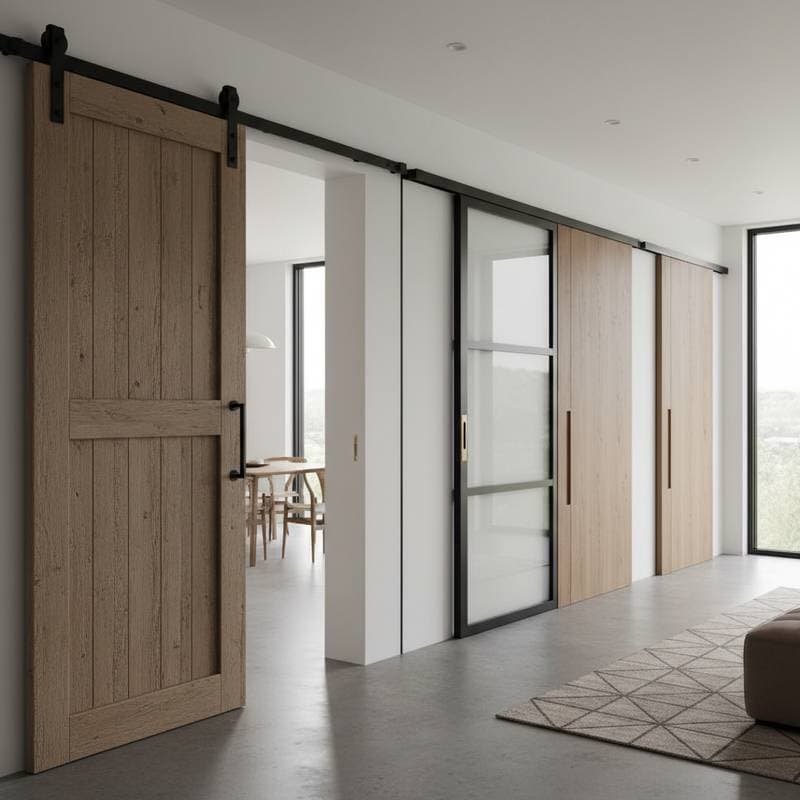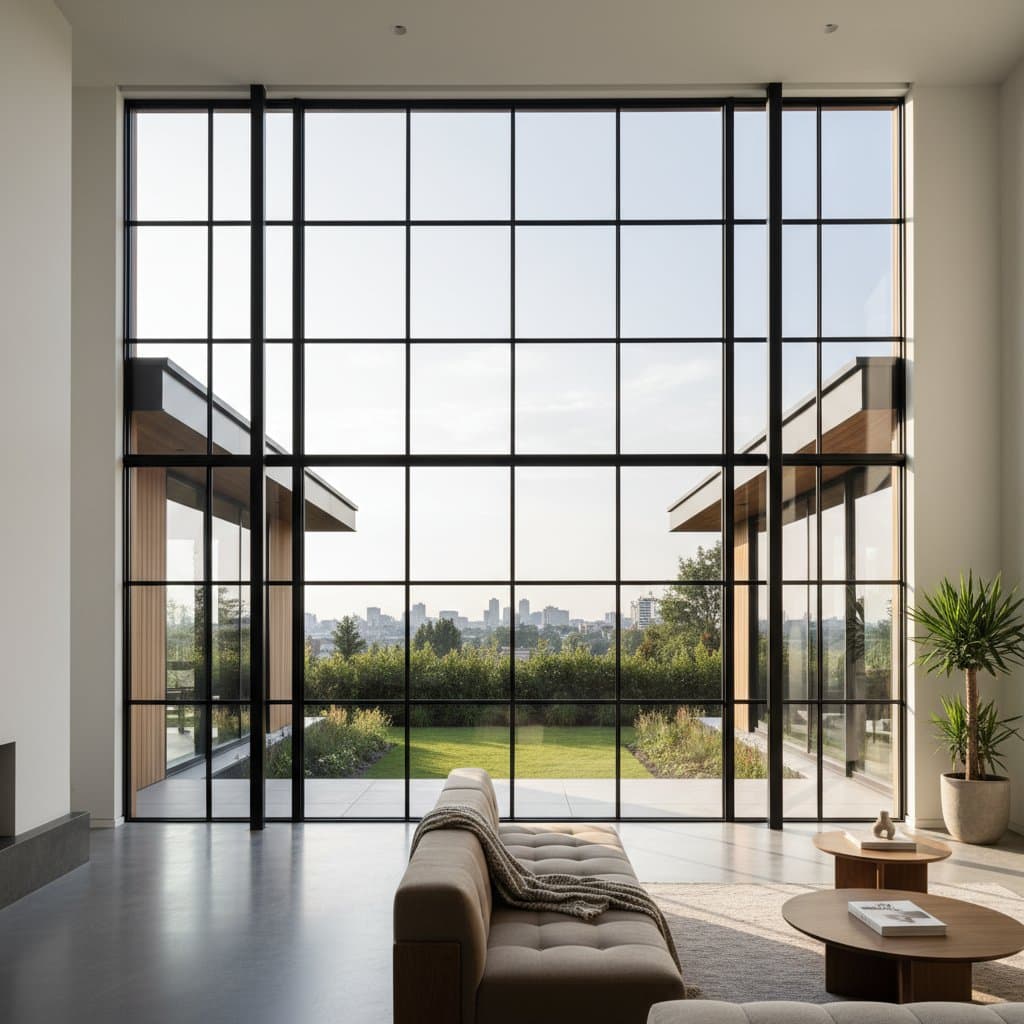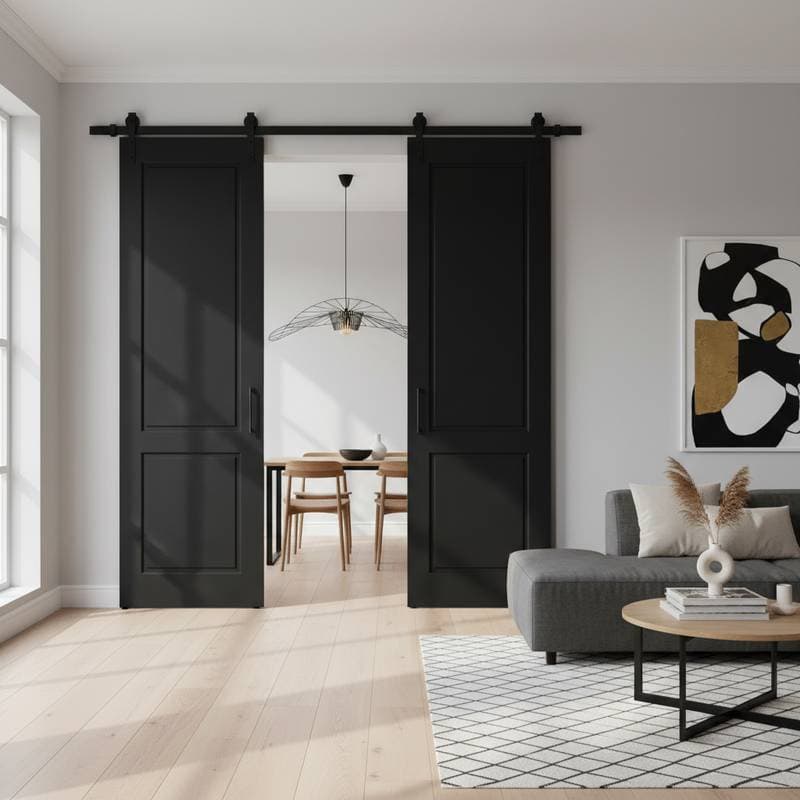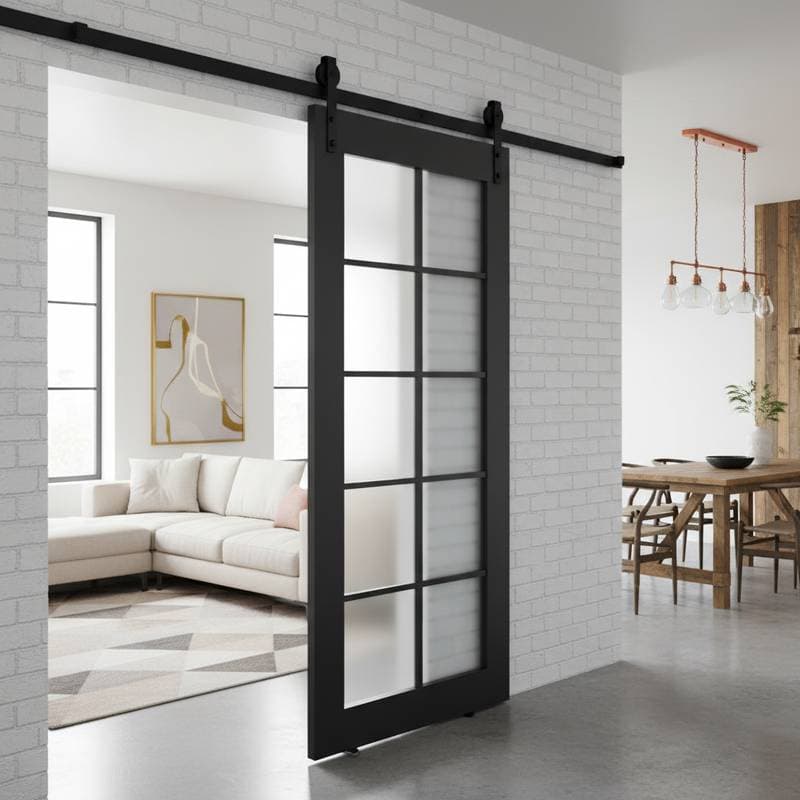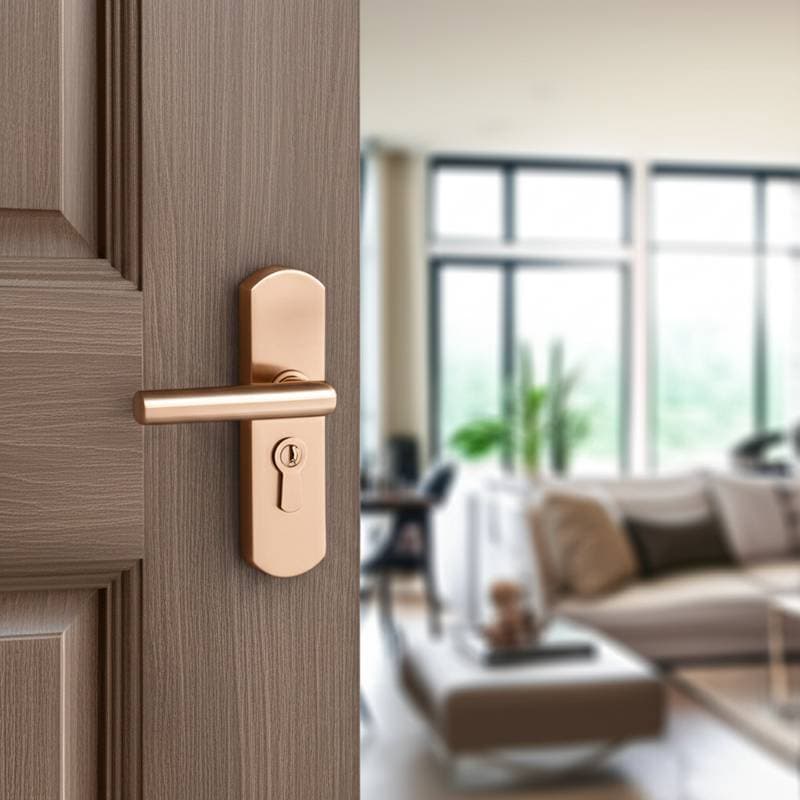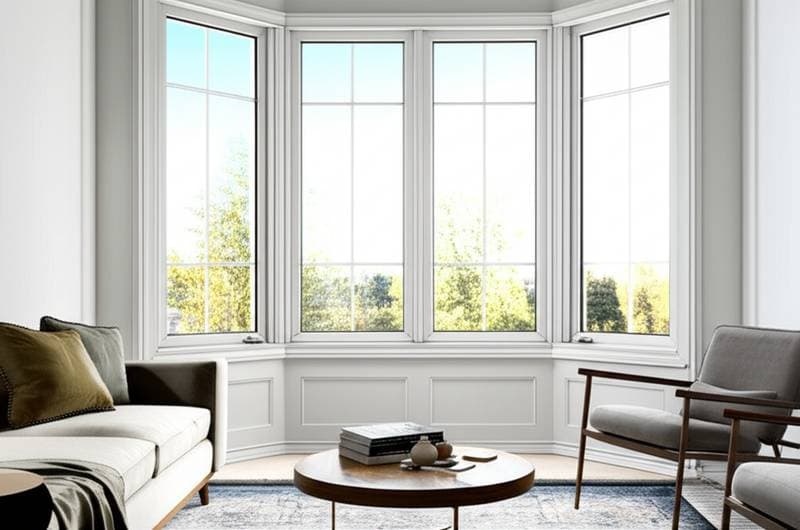Introduction
Barn doors rose to prominence in recent years for their rustic appeal and efficient use of space in homes. These doors slide along an exterior track, evoking a farmhouse aesthetic that many found charming. Yet, as design preferences evolve in 2025, homeowners increasingly seek alternatives that resolve the practical drawbacks of barn doors while aligning with contemporary lifestyles.
The shift stems from a desire for quieter operation, better privacy, and integration into sleek interiors. Modern sliding solutions address these needs without compromising on functionality. This article examines the reasons behind the decline of barn doors and highlights superior options to consider for your next home upgrade.
Key Reasons Barn Doors Are Fading
Persistent Noise and Vibration
One primary issue with barn doors involves the exposed track system, which generates noticeable noise during operation. As the door moves, metal components rattle, disrupting the calm of living spaces, especially in open-plan homes. Homeowners report that this sound becomes particularly irritating over time, prompting a search for smoother mechanisms.
In contrast, advanced alternatives incorporate soft-close technology and insulated tracks to eliminate such disturbances. This focus on acoustic comfort reflects broader trends toward serene, wellness-oriented environments.
Inadequate Privacy and Light Control
Barn doors often leave gaps along the edges and top, allowing light to seep through and compromising privacy in bedrooms or bathrooms. Sound travels easily past these barriers, making them unsuitable for shared walls or family areas. Many users find that the aesthetic charm does not outweigh these functional shortcomings.
Privacy demands have intensified with remote work and multigenerational living. Solutions that create a full seal without visible hardware better meet these expectations, offering peace of mind alongside style.
High Maintenance and Durability Concerns
The exterior hardware on barn doors collects dust, pet hair, and debris, requiring regular cleaning to maintain smooth sliding. Exposure to humidity or temperature changes can cause tracks to warp, leading to misalignment and frustrating repairs. Over years of use, these elements diminish the door's reliability.
Long-term durability plays a crucial role in homeowner decisions. Options with concealed or protected components reduce upkeep and extend lifespan, providing better value for the investment.
Mismatch with Modern Aesthetics
While barn doors suit rustic or industrial themes, they clash with the clean lines of minimalist, Scandinavian, or mid-century modern designs popular in 2025. The bulky track and hardware draw attention away from the door itself, disrupting visual flow in refined spaces. This stylistic limitation confines their appeal to specific niches.
Current interiors prioritize subtlety and versatility. Doors that blend seamlessly into walls or frames allow for flexible decor updates without major renovations.
Superior Sliding Door Alternatives
Pocket Doors for Seamless Integration
Pocket doors recess completely into the wall, creating a flush surface that enhances room continuity. This design maximizes floor space and provides excellent sound insulation through tight seals. Ideal for closets, pantries, or dividing living areas, they offer a sophisticated alternative to swinging doors.
Installation requires precise wall framing to accommodate the pocket cavity, often involving minor structural adjustments. Select solid-core panels for added strength and noise reduction in high-traffic zones.
Bypass Doors for Practical Efficiency
Bypass doors operate on parallel tracks, allowing panels to slide past one another for easy access. Commonly used in closets or room dividers, they conserve space while permitting quick organization of contents. Frosted glass or louvered wood variants add ventilation without sacrificing privacy.
These systems support multiple panels for wider openings, making them versatile for storage solutions. Their straightforward mechanism ensures reliable performance with minimal maintenance.
Hidden-Track Systems for Discreet Elegance
Hidden-track sliding doors conceal the rail within the door frame or ceiling, mimicking the appearance of traditional hinged doors. This innovation delivers effortless gliding motion without visible hardware, perfect for contemporary kitchens or home offices. Customization options include various woods, finishes, and heights to match any interior.
Engineered for quiet operation, these doors feature ball-bearing rollers that reduce friction. Professional installation guarantees alignment, preventing future adjustments.
Glass Panel Systems for Light and Openness
Glass sliding doors, available in clear, frosted, or tinted varieties, flood spaces with natural light while maintaining boundaries. Soft-close hinges and acoustic seals minimize noise, making them suitable for urban apartments or sunrooms. Combine with wooden frames for a balanced blend of warmth and modernity.
These systems excel in promoting an airy feel, ideal for small homes. Tempered glass ensures safety and durability against impacts.
Cost Comparisons and Value Analysis
Barn doors generally range from $200 to $800 for materials and basic installation, appealing to budget-conscious projects. However, ongoing maintenance and potential repairs can increase long-term costs. Their affordability comes at the expense of advanced features.
Pocket doors command higher prices, typically $1,000 to $3,000, due to the need for wall modifications and custom framing. The investment yields substantial returns in space efficiency and privacy. Bypass and hidden-track options sit in the mid-range at $500 to $1,500, balancing cost with premium functionality.
Glass systems vary from $600 to $2,000, depending on panel size and treatments. Factor in energy savings from better light control when evaluating overall value. Consult local contractors for accurate quotes tailored to your home's specifics.
Emerging Design Trends in 2025
Designers emphasize slim profiles and matte finishes in sliding doors, moving away from ornate hardware. Black or brushed metal accents complement neutral palettes, creating understated luxury. Integration with smart home technology, such as voice-activated controls, adds convenience for tech-savvy households.
Sustainability influences material choices, with recycled composites and low-VOC finishes gaining traction. Bi-fold glass panels that expand openings for indoor-outdoor flow align with wellness trends. These elements ensure doors contribute to holistic, eco-conscious living spaces.
Practical Tips from Interior Experts
Evaluate your room's layout first: Measure openings and consider daily usage patterns to select the appropriate system. Prioritize soundproofing if noise control matters, opting for doors with rubber gaskets or double panels.
Test hardware samples for weight and glide quality before committing. For custom looks, pair doors with matching trim to unify the aesthetic. Budget for professional installation to achieve flawless results and avoid DIY pitfalls.
Incorporate lighting around glass doors to highlight textures and enhance ambiance. Regularly inspect tracks for smooth operation, extending the life of your investment.
Transform Your Space with Thoughtful Door Choices
Upgrading from barn doors to modern sliding alternatives revitalizes home functionality and comfort. These solutions deliver quiet privacy, enduring style, and practical benefits that adapt to evolving needs. Select a system that reflects your vision, and experience the difference in daily living.

